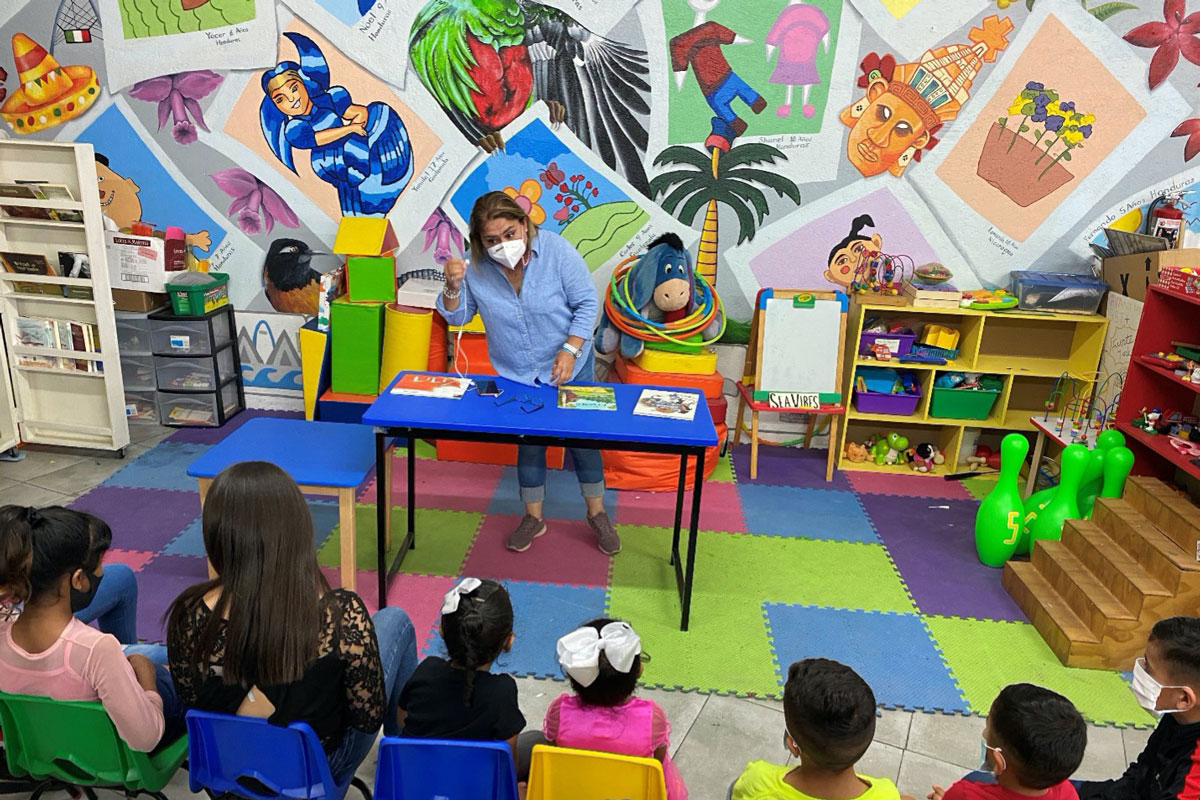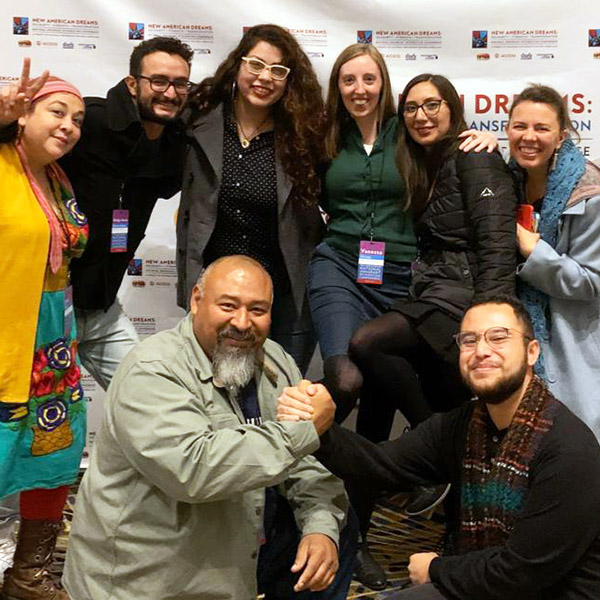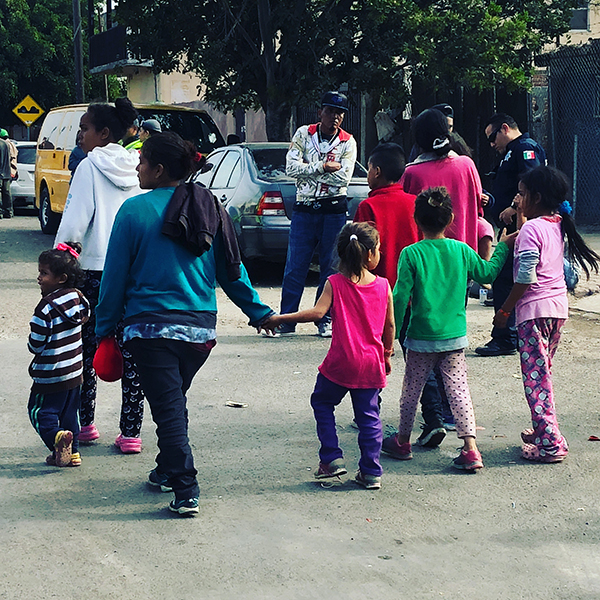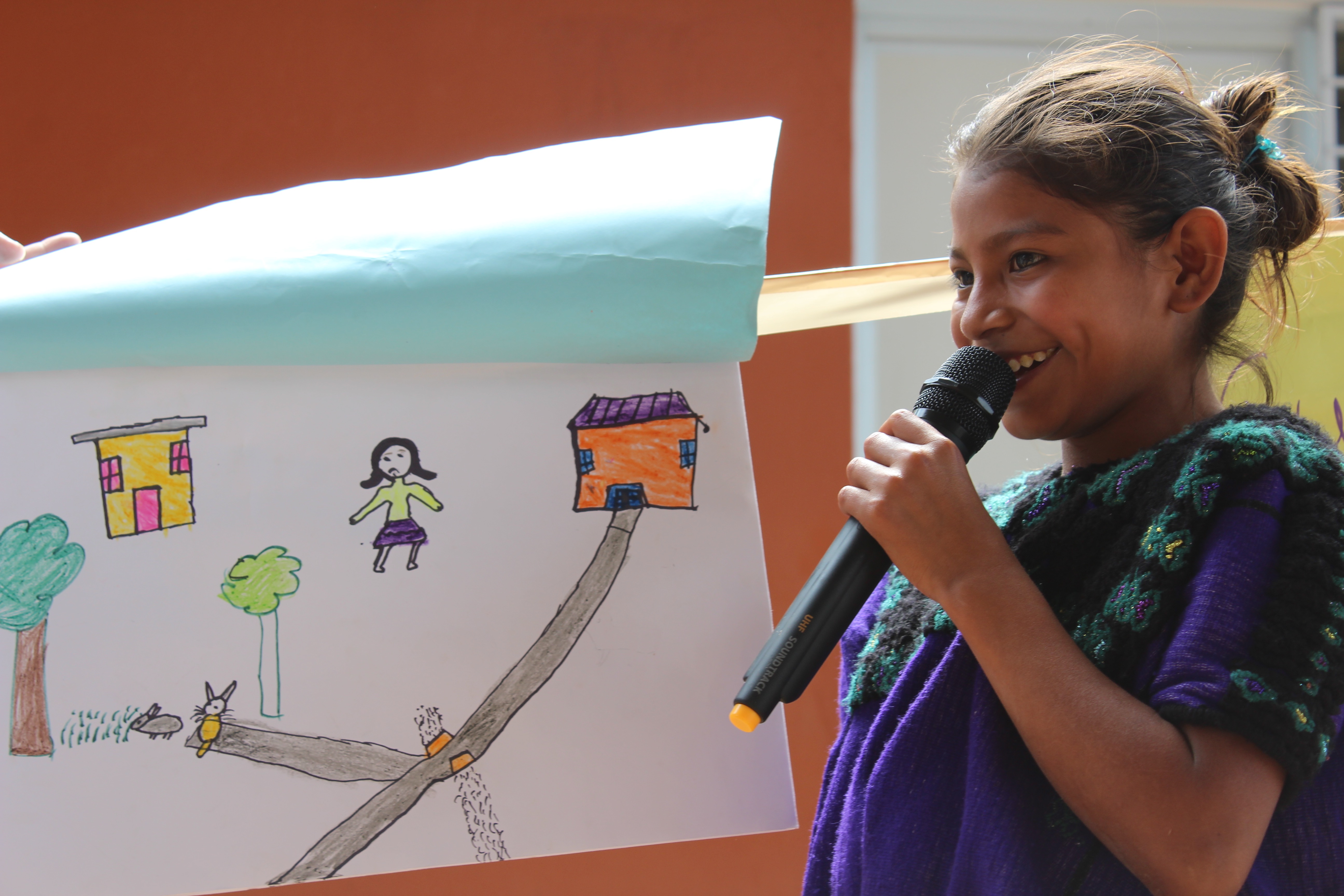This interview was conducted by Global Fund for Children’s spring 2021 intern Daniela Barahona and by GFC Program Manager for Advocacy and Movement Building Vanessa Stevens.
Amid an increase in the number of asylum seekers waiting at the US-Mexico border, Espacio Migrante is providing children and their families with shelter, information, and other support.
Waves of asylum seekers are gathering at the El Chaparral border crossing that connects Tijuana, Mexico to San Diego, California, waiting anxiously for the opportunity to apply for asylum in the United States. Among them are an estimated 300 children. Many are living in precarious conditions with insecure living arrangements and no real access to healthcare during the COVID-19 pandemic.
With growing concerns about the situation on the border and its impact on children, Global Fund for Children reached out to our local partner Espacio Migrante to learn more. Tijuana-based Espacio Migrante is a local organization working directly with migrants, refugees, and asylum seekers of diverse communities to promote human rights and social, racial, and gender justice. Espacio Migrante operates both a community center and a migrant shelter within walking distance of El Chaparral and is mobilizing to meet the needs of migrant families during the emergency unfolding at the border.
We connected with Paulina Olvera Cáñez, Director of Espacio Migrante, to hear firsthand about the situation in Tijuana and how it is impacting migrant children.

What’s happening on the ground in Tijuana?
Families are gathering at the port of entry in hopes of requesting asylum and awaiting their hearings in the US. There is a lot of confusion surrounding the migration process and policies, and a lot of misinformation, and people are gathering at the border hoping to find information and clarity there. However, because information is not easily accessible, many people have had to set up temporary housing while they wait to hear updates from the US, creating an extremely delicate situation at the border. We estimate there are 2,000 people in the camp, and the majority are families with small children.
The situation at the camp has become more and more dangerous, as there are no sanitary conditions, for example, no showers and very few toilets, people do not have masks, running water, soap, etc., and the risk of getting COVID-19 or other diseases remains high. The other big risk is the lack of security because there is a lack of presence of Mexican municipal, state, and federal authorities, so there have been attempts to kidnap children, cases of sexual abuse, and actual kidnappings of adults at the camp. There is a presence of organized crime at the camp. Additionally, most shelters are full and overcrowded.
The US is expelling 600 people daily to Tijuana under a public health order called “Title 42.” Some people are being expelled from Texas who have never been to Tijuana and have no housing or support network. When they arrive in Mexico, they are not tested again for COVID-19.
The mistreatment that migrants suffer in the unstable situation at El Chaparral is a direct infringement on their human rights, and this crisis is being created and exasperated by the silence received from both the governments of the US and Mexico.

How does this crisis affect children?
We and our allies estimate that there are at least 300 migrant children currently in the area surrounding El Chaparral with their families, or in some cases without. Their physical, mental, and emotional integrity is greatly at risk, and we are very concerned. We fear there is a high risk of abduction. This is a major concern as Tijuana is known as one of the cities with a high rate of child sexual exploitation practices.
Most of the migrant children are not going to school. Even though education is a human right, and Mexican laws recognize the right to education for all children, including migrant children, in reality we see that most asylum-seeker children are not in school. This can be because the parents don’t know that it’s their right, or they don’t know where to go or how to start the process, or education is not their priority because they are struggling to have food and housing.
However, many families who try to enroll their children in school in Tijuana get rejected because school personnel don’t know about the right to education for migrant children. Oftentimes, the answers that families get are: “there’s no more space,” or “we only accept Mexican children,” or they get asked for a lot of documents (birth certificates, grades, documents from the school) that are almost impossible for families to get, and that shouldn’t be a requirement. The migrant mothers in El Chaparral have expressed their desire for their children to be in school and continue their academic development.
We are working with migrant families living in the Espacio Migrante shelter to create materials about the right to education in Tijuana. It’s a project called Telenovela Comunitaria (Community Telenovela), part of our Educación en Movimiento (Education in Movement) program. Families are sharing their experiences to create a series of three short videos to help other families overcome obstacles and access resources in Tijuana to access education.
How is Espacio Migrante taking action to support migrant families?
We have launched an Asylum Seeker Information Campaign to combat misinformation and ensure asylum seekers know their rights. This campaign includes the use of virtual and face-to-face briefings, infographics, and informative videos with continuous updates on migration policies in a variety of languages. With our allies, we are also giving regular in-person briefings at El Chaparral to distribute these resources and document what is happening as part of human rights monitoring.
Having a local presence in Tijuana gives Espacio Migrante the opportunity to monitor and advocate for the human rights of migrants. We are actively communicating with municipal and state government agencies in Tijuana about what is happening and informing our partners in the US that can do advocacy with a greater scope.
As part of our advocacy, we also have an Asylum Defense Campaign led by migrant community members, which creates space for the voices of asylum seekers to be heard and included in decision-making processes. We are also making an intentional effort to raise the voices of Haitian and African asylum seekers, who live in uncertainty about their future, and whose rights are most violated in Mexico because of the language barriers and racism they face.
Can you tell us more about the discrimination facing Haitian migrants and migrants from African countries in Tijuana?
These communities have long suffered racism in Tijuana and are constantly denied services such as housing and healthcare. Since they do not speak Spanish, and neither the Mexican nor US governments are creating any material in their languages (Haitian Creole, French, and English), it is very important that our information campaign includes materials in these languages and that we have the staff to support these communities. During the first weeks of the encampment in Tijuana, over half of the people there were Haitian, mostly families with small children.
You can follow Espacio Migrante’s advocacy on Facebook, Twitter, and Instagram.
GFC is proud to partner with Espacio Migrante and recently disbursed an emergency grant to support its efforts to protect the rights of migrant children on the border. Espacio Migrante is part of GFC’s Adolescent Girls and Migration initiative, which supports a cohort of civil society organizations to strengthen their programs and advocacy to protect the safety and rights of migrant girls in Guatemala, Mexico, and the United States.
Header photo: This image of the US-Mexico border was captured on a visit to Espacio Migrante. © GFC



